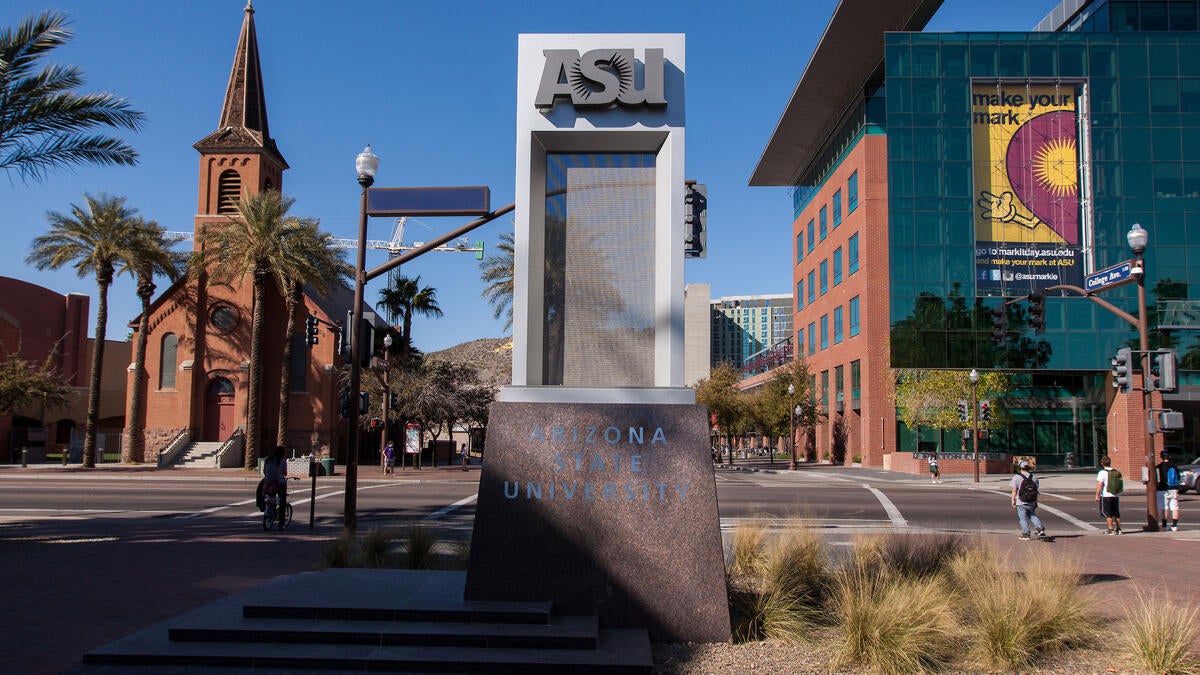Times Higher Education rankings released today place Arizona State University in the top 8% of worldwide universities, and among the top 50 in the United States.
ASU tied for No. 132 out of 1,662 institutions across the globe, a jump from its 2020 ranking of No. 184 worldwide out of 1,527.
The university also ranks in the top 25% of U.S. higher education institutions, coming in at No. 45 out of 183, ahead of Rice University, the University of Arizona, Northeastern University and the University of Notre Dame.
“Arizona State University has sharpened its focus and used its creativity and resources to meet the challenges of the past year in a way that has advanced both our standards of excellence and our commitment to student access and success,” ASU President Michael Crow said. “The resiliency that has driven our progress will continue to provide the foundation for the way we advance in an economy and in a world where universities must do more than ever, and we believe our climb in the rankings is a reflection of these efforts.”
The Times Higher Education World University Rankings judge research-intensive universities across all their core missions: teaching, research, knowledge transfer and international outlook.
This year’s rankings reflected a significant boost to citation impact for those universities that published medical sciences research related to COVID-19, but the organization said it was unclear whether the pandemic would reshape or entrench existing hierarchies in higher education. The 2022 version of the rankings, released today, draws on data on research published between 2016 and 2020, and citations made between 2016 and 2021.
David Watkins, head of data science at Times Higher Education, said the citations effect was “to be expected given that COVID-19 has had such an impact worldwide.”
“Research into the disease, and especially work on vaccines, was heavily funded and prioritized, and some papers have attracted more than 20,000 citations within a year of publication,” he said in the rankings’ official release.
“Because (Times Higher Education) uses a five-year window for publications, we believe that this effect will remain noticeable in the rankings for some time, and it is likely that other COVID-related effects, such as reputational impact — both positive and negative — and income, will also become visible.”
The rankings’ performance indicators are grouped into five pillars: teaching (the learning environment); research (volume, income and reputation); citations (research influence); international outlook (staff, students and research); and industry income (knowledge transfer). ASU’s top pillar is research (No. 129).
Advancing research and discovery of public value is a key part of the charter of ASU, where there is an emphasis on research with real-world impact. Earlier this year, ASU moved up to sixth out of 759 universities in the nation for total research expenditures among universities without a medical school, according to the latest National Science Foundation Higher Education Research and Development (HERD) rankings. For fiscal year 2019, ASU had nearly $640 million in research expenditures.
“Measuring research expenditures is a useful proxy for measuring what really matters: impact,” said Sally C. Morton, executive vice president of Knowledge Enterprise at ASU. “We measure our success not by grant dollars awarded, but by lives improved, because we believe deeply in a university’s moral imperative to bring radical advancement to the communities it serves — locally, nationally and globally.”
More Arts, humanities and education

ASU’s Humanities Institute announces 2024 book award winner
Arizona State University’s Humanities Institute (HI) has announced “The Long Land War: The Global Struggle for Occupancy Rights” (Yale University Press, 2022) by Jo Guldi as the 2024…

Retired admiral who spent decades in public service pursuing a degree in social work at ASU
Editor’s note: This story is part of coverage of ASU’s annual Salute to Service.Cari Thomas wore the uniform of the U.S. Coast Guard for 36 years, protecting and saving lives, serving on ships and…

Finding strength in tradition
Growing up in urban environments presents unique struggles for American Indian families. In these crowded and hectic spaces, cultural traditions can feel distant, and long-held community ties may be…
